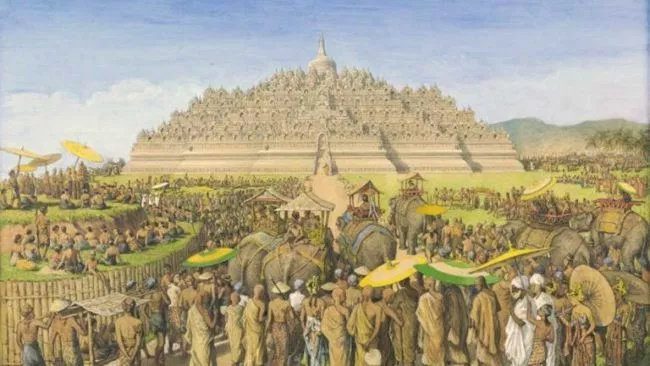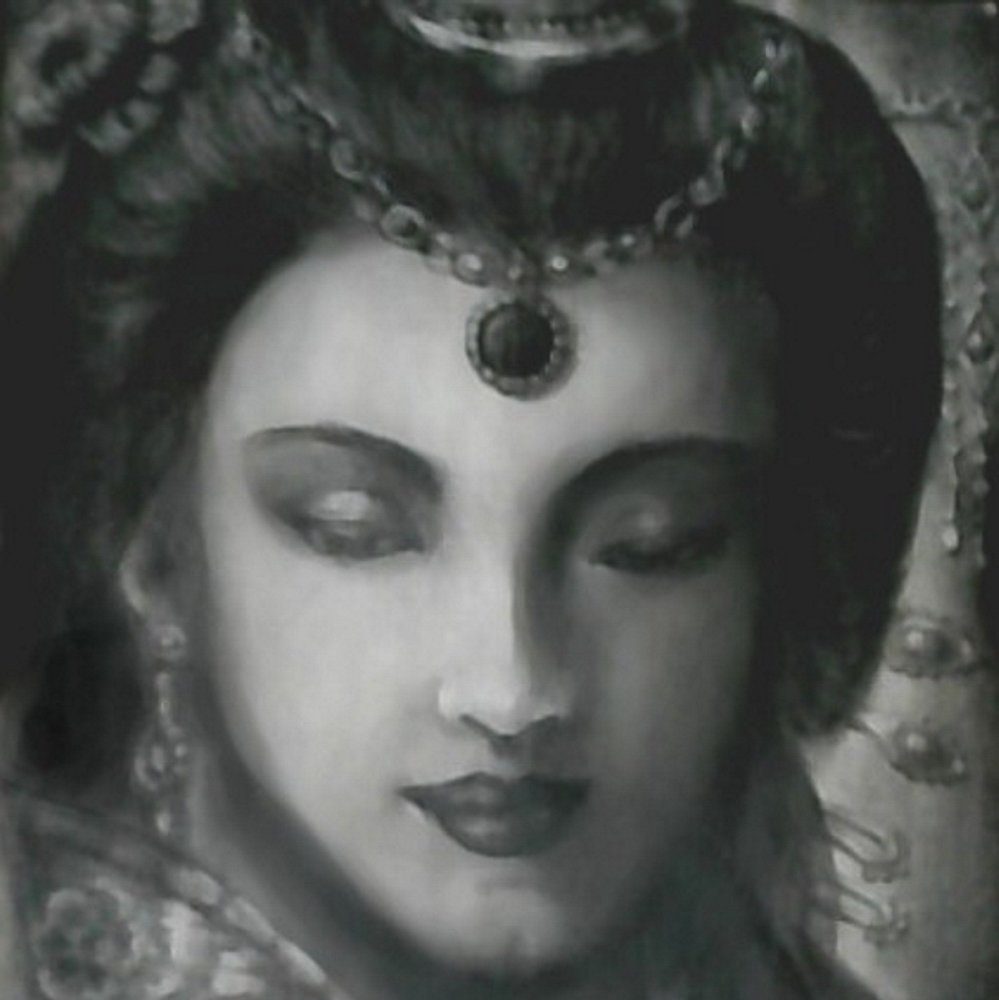Pramodawardhani (also known as rī Kahulunnan or rī Sanjiwana ) was the crown princess of the Sailendra dynasty who became the consort of Rakai Pikatan , the sixth king of the Medang Kingdom of Central Java period around the 840s .
Inauguration of Borobudur
The name Pramodawardhani is found in the Kayumwungan inscription dated March 26, 824 as the daughter of Maharaja Samaratungga . According to the inscription, he inaugurated a very beautiful multi-storey Jinalaya building. This building is generally interpreted as Borobudur Temple .
Meanwhile, the Tri Tepusan inscription dated 11 November 842 mentions a figure with the title Sri Kahulunan who exempted several villages from taxes so that the residents would participate in caring for Kamulan Bhumisambhara (the original name of Borobudur Temple ). Historian Dr. De Casparis interpreted the term Sri Kahulunan as “the empress “, namely Pramodawardhani, because at that time Rakai Pikatan was thought to have become king.
Another opinion was expressed by Drs. Boechari who interprets Sri Kahulunan as the queen mother . For example, in the Mahabharata the character Yudhisthira calls his mother, namely Kunti , as Sri Kahulunan . So, according to this version, the character of Sri Kahulunan is not Pramodawardhani, but his mother, namely Samaratungga’s wife .

Marriage with Rakai Pikatan
Rakai Pikatan Mpu Manuku is the sixth king of the Medang Kingdom according to the Mantyasih inscription . From the Wantil inscription it is known that Rakai Pikatan adheres to the Hindu Shiva religion and is married to a Buddhist princess . The majority of historians agree that the princess is Pramodawardhani.
The Kayumwungan inscription in 824 only mentions the names of Pramodawardhani and Samaratungga without mentioning the name of Mpu Manuku. It can be estimated that in that year Pramodawardhani and Mpu Manuku were not married.
Meanwhile, in the Munduan inscription in 807, Mpu Manuku already served as Rakai Patapan, whereas in 824 Pramodawardhani was still a girl. This means that there is a large age difference between the two. Maybe Rakai Pikatan Mpu Manuku is the same age as his father-in-law, Samaratungga .
From the marriage of Rakai Pikatan with Pramodawardhani, it is estimated that Rakai Gurunwangi Dyah Saladu (Plaosan inscription) and Rakai Kayuwangi Dyah Lokapala (Wantil inscription) were born. Thanks to his services in crushing the enemy of the state named Rakai Walaing Mpu Kumbhayoni, Rakai Kayuwangi was able to become king after Rakai Pikatan.
The appointment of Rakai Kayuwangi, the youngest son, to become king later caused jealousy in Rakai Gurunwangi’s heart, namely the discovery of the Munggu Antan inscription in 887 .
Relations with Balaputradewa
Balaputradewa was the king of the Srivijaya Kingdom, son of Samaragrawira. Prof. NJ Krom considers Samaragrawira synonymous with Samaratungga , so Balaputradewa is automatically considered as Pramodawardhani’s brother.
Dr. De Casparis then developed a theory that there had been a civil war over the throne after Samaratungga’s death , between Balaputradewa and Pramodawardhani. Finally Balaputradewa was defeated by Rakai Pikatan, Pramodawardhani’s husband. He then fled to the island of Sumatra and became king of the Srivijaya Kingdom.
De Casparis’ theory is guided by the Wantil inscription in 856 which mentions a war between Rakai Pikatan against an enemy hiding in a fort heap of stones. In the Wantil inscription found the term Walaputra which is interpreted as another name Balaputradewa.
Meanwhile Prof. Slamet Muljana believes that Balaputradewa is not Pramodawardhani’s brother. This opinion is guided by the Kayumwungan inscription which states that Samaratungga only has one daughter (namely Pramodawardhani). According to Slamet Muljana, Balaputradewa is more appropriate as Samaratungga’s younger brother, and both are the sons of Samaragrawira. In other words, Pramodawardhani is Balaputradewa’s nephew.
The stone pile fort which is the headquarters of Balaputradewa is identical to the Ratu Boko Site. Drs. Boechari found several inscriptions around the site, but not in the name of Balaputradewa, but in the name of Rakai Walaing Mpu Kumbhayoni who claimed to be a descendant of the founder of the kingdom (namely Sanjaya ).
Boechari argues that Rakai Pikatan’s enemy is not Balaputradewa, but Rakai Walaing. According to him, the term Walaputra in the Wantil inscription does not mean Balaputradewa, but means “the youngest child”, which is the nickname for Rakai Kayuwangi as a hero to destroy Rakai Walaing.
Other evidence shows that there is damage to some of the inscriptions that record the genealogical sequence of Rakai Walaing. This damage seems to have been deliberately done by Rakai Pikatan as a fellow descendant of Sanjaya who is competing for the Medang throne.
If the opinions of Slamet Muljana and Boechari are combined, a theory can be put forward that the war between Rakai Pikatan and Balaputradewa may never have occurred. According to the Po Ngar inscription in 802 the Cambodian state managed to escape from Javanese colonialism. Perhaps this was the reason Samaragrawira at the end of his reign divided the power of the Sailendra dynasty between his two sons. Samaratungga ruled in Java , while Balaputradewa ruled in Sumatra .
This second theory is an alternative to the first theory which says Balaputradewa fled to Sumatra due to losing the war against Pramodawardhani who was assisted by Rakai Pikatan.

